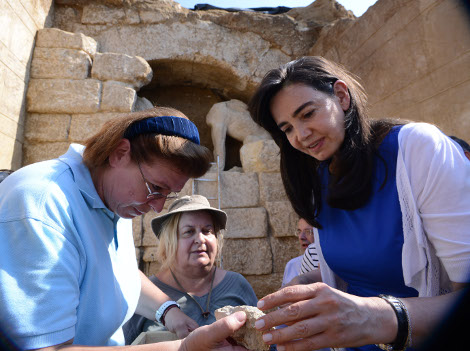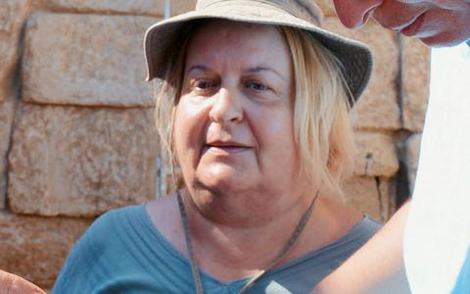Photo: iefimerida.gr
Over the past 10 days Greece has again found itself at the epicentre of global interest. This time the reason is not the economic crisis but a kind of an archaeological thriller. It is expected that its end will reveal the secret of the tomb in Amphipolis where the excavations are being intensively conducted and are already in the final phase. They are led by head of the 28th Ephorate of Prehistoric and Classical Antiquities Catherine Peristeri.
She has been the head of the service since 2009 but her connection with the tomb goes back a long way to the time when she was a research associate of famous archaeologist Dimitris Lazaridis, who began the excavations in the region in 1965. From her work with him, she keeps many memories that are associated with some of the greatest discoveries. For example, after the discovery of the tomb of Philip of Macedonia in Vergina by Manolis Andronikos, Lazaridis bitterly stated, "I could not find Roxana."

In 2009 Catherine Peristeri became the head of the group that began to work intensively to uncover the tomb in Amphipolis. The people who know her define her as an archaeologist with rich knowledge and experience, with a strong motivation to achieve her goal and reveal the identity of the deceased person who was laid in the tomb.
 Until 2012, the excavations were limited to the first level, without giving interesting results. In 2012, however, Peristeri began to explore the lower layers to establish the size of the tomb.
Until 2012, the excavations were limited to the first level, without giving interesting results. In 2012, however, Peristeri began to explore the lower layers to establish the size of the tomb.
The excavations in the first two areas within the perimeter of the Kasta hill did not yield the desired result. However, while exploring the third zone, the archaeologist uncovered a significant finding, namely the impressive yard of the tomb. At the beginning of the excavations, the mound was 23 metres high and archaeologists had to "go down" another 12 metres to reach their find, as stated by Peristeri.
In this phase of the excavations, which is one of the key ones, she found a stone ring. This finding led to the discovery of a 3 metre high wall, that was exceptionally impressive as a structure, and of the 60 metres long yard of the tomb, which was fully preserved. The remaining part with a perimeter of 500 metres was destroyed in antiquity.
At this stage of her work, Peristeri sought assistance from architect Michalis Lefantzis who has experience from his work on the projects for the restoration of the Acropolis in Athens and happened to be in the region at that time. From that moment Lefantzis became a permanent member of the team led by Peristeri. They both tried to reconstruct the funerary complex and after a long study, they concluded that the Lion of Amphipolis was directly connected to the eponymous tomb.
Moreover, the digital scanning that was carried out last year showed that the yard of the tomb formed a perfect circle, and that the lion, which today is located at a distance of five kilometres from it, was placed on top.
It is said that the meeting between Catharine Peristeri and Prime Minister Antonis Samaras that took place 10 days ago was just one of the many conversations held between them over the past two years. Their acquaintance dates back to the time when Samaras was Minister of Culture from 2007 to 2009 According to sources, he had assisted her many times in solving various problems encountered during the excavation works in order for them to continue unhindered.

One of Catherine Peristeri’s most characteristic features is that she is very concise in her statements. The reason for this is her desire to prevent her words from being misinterpreted. Her decision is justified by the fact that she and her team members are often forced to refute various rumours about the identity of the deceased in the tomb, the most common of them being that Alexander the Great himself was laid there.
In order to interrupt the flow of false rumours, the Greek Ministry has announced that it will issue continuous information bulletins on the progress of the excavations. The same message refutes the reports that the two sphinxes that are at the entrance of the tomb are to be removed in order to facilitate the access of archaeologists to its interior.